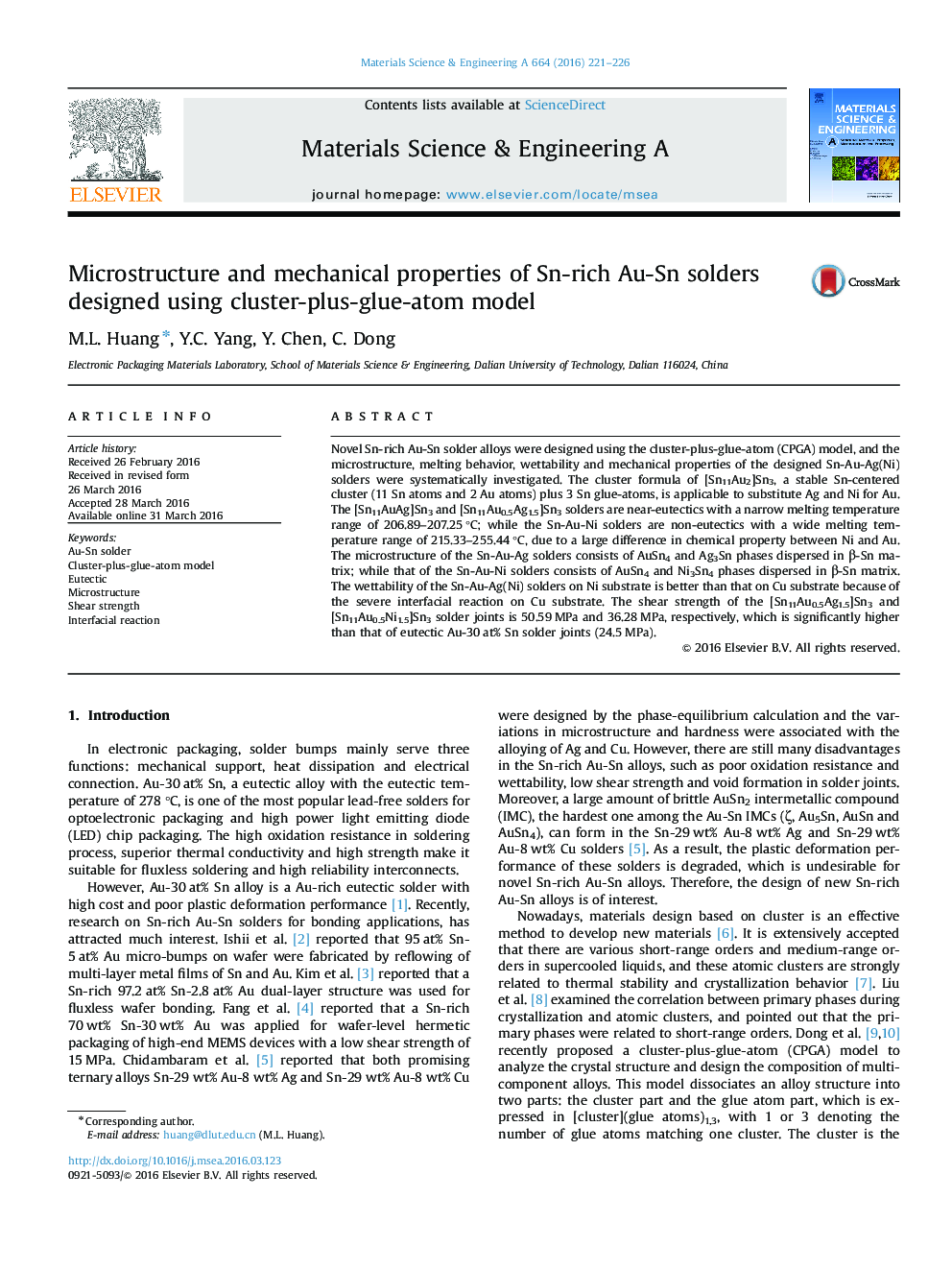| Article ID | Journal | Published Year | Pages | File Type |
|---|---|---|---|---|
| 1573421 | Materials Science and Engineering: A | 2016 | 6 Pages |
Abstract
Novel Sn-rich Au-Sn solder alloys were designed using the cluster-plus-glue-atom (CPGA) model, and the microstructure, melting behavior, wettability and mechanical properties of the designed Sn-Au-Ag(Ni) solders were systematically investigated. The cluster formula of [Sn11Au2]Sn3, a stable Sn-centered cluster (11 Sn atoms and 2 Au atoms) plus 3 Sn glue-atoms, is applicable to substitute Ag and Ni for Au. The [Sn11AuAg]Sn3 and [Sn11Au0.5Ag1.5]Sn3 solders are near-eutectics with a narrow melting temperature range of 206.89-207.25 °C; while the Sn-Au-Ni solders are non-eutectics with a wide melting temperature range of 215.33-255.44 °C, due to a large difference in chemical property between Ni and Au. The microstructure of the Sn-Au-Ag solders consists of AuSn4 and Ag3Sn phases dispersed in β-Sn matrix; while that of the Sn-Au-Ni solders consists of AuSn4 and Ni3Sn4 phases dispersed in β-Sn matrix. The wettability of the Sn-Au-Ag(Ni) solders on Ni substrate is better than that on Cu substrate because of the severe interfacial reaction on Cu substrate. The shear strength of the [Sn11Au0.5Ag1.5]Sn3 and [Sn11Au0.5Ni1.5]Sn3 solder joints is 50.59 MPa and 36.28 MPa, respectively, which is significantly higher than that of eutectic Au-30 at% Sn solder joints (24.5 MPa).
Related Topics
Physical Sciences and Engineering
Materials Science
Materials Science (General)
Authors
M.L. Huang, Y.C. Yang, Y. Chen, C. Dong,
